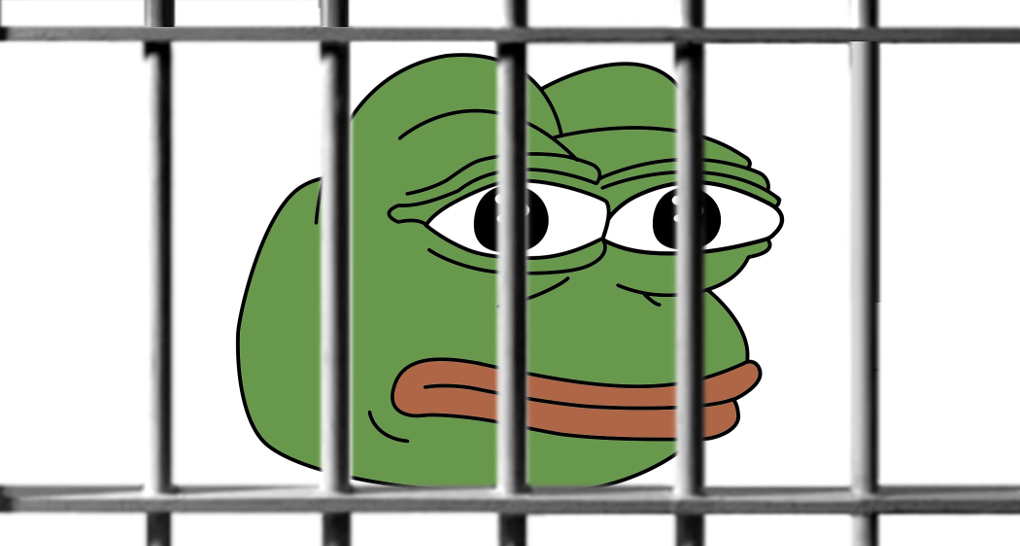It’s Pretty Weird, Actually, That the Anti-Defamation League Says “Pepe the Frog” Is a Hate Symbol

“Pepe the Frog” just started trending on Twitter. The famous frog meme has actually been in the headlines for weeks now, ever since Hillary Clinton’s campaign posted about the meme’s proliferation in white supremacist circles. Pepe the Frog’s sudden popularity among racists inspired the Clinton camp to argue that it was a cause for concern to see Donald Trump’s son and one of his advisors tweeting pictures of the frog.
Today, Pepe the Frog has burst back into the news cycle once again, because the Anti-Defamation League has just added the meme into their database of hate symbols. Jonathan A. Greenblatt, the CEO of the Anti-Defamation League, explained the decision in a statement: “Once again, racists and haters have taken a popular Internet meme and twisted it for their own purposes of spreading bigotry and harassing users. These anti-Semites have no shame. They are abusing the image of a cartoon character, one that might at first seem appealing, to harass and spread hatred on social media.”
Greenblatt’s statement is brief, but it still manages to convey that the ADL is indeed aware that Pepe the Frog didn’t start out as a hate symbol. That’s why it’s been so bizarre to see him transform into one, especially since it’s happened relatively quickly.
Pepe the Frog has been around for a little over a decade. His connection to white supremacists didn’t kick into high gear until 2016. What’s more, Pepe the Frog didn’t begin life as a meme, but rather, as a comic drawn by artist Matt Furie. Way back in 2005, Furie posted digital zines featuring a variety of his drawings online, and Pepe the Frog was just one of many characters that skyrocketed to popularity. One of the best-known early drawings of Pepe features the frog peeing on himself while declaring, “Feels good man.” This is the sort of absurdist, one-panel humor that thrives on the internet.
That’s part of why it’s been so sad to see Pepe the Frog’s reputation change from a neutral one to an actively negative one. After all, he started out as a frog with a funny collection of facial expressions that could be used in lots of contexts–sort of like James Van Der Beek’s collection of expression-based gifs, but more versatile, since they’re drawings, and people could make their own versions. Pepe the Frog has remained popular over the last decade, which is surprising for a meme of his age. Even Nicki Minaj has posted a Pepe meme of herself on her own social media in the past. If that doesn’t mean Pepe’s cool, then what does???
If enough uncool people hang around you, though, then your coolness can’t last. That’s been the case for poor Pepe (not that it’s his fault, since he’s just an inanimate drawing). Last May, Olivia Nuzzi of The Daily Beast took note that a lot of white nationalists seemed to be organizing online efforts to claim Pepe the Frog as their own. Why did they choose Pepe the Frog, of all the memes out there?
It’s not as though other memes haven’t gotten associated with racist sentiment in the past (e.g. Harambe). But usually there are so many different varieties of a given meme that it would be almost impossible to claim any one intention or direction. Even memes created with hateful intent tend to get reclaimed and subverted and iterated endlessly until they mean nothing and everything. In spite of that, though, Pepe the Frog’s reputation has gotten bad enough that the ADL now considers it notable. We’ll probably never know why internet racists chose Pepe as their own, but they did, and now it’s a thing.
Earlier this month, The Atlantic spoke to Pepe the Frog’s artist to ask him how he felt about the meme’s new reputation. At the time, Furie didn’t mind the fact that his creation had gotten co-opted by many different people in many different ways:
My feelings are pretty neutral, this isn’t the first time that Pepe has been used in a negative, weird context. I think it’s just a reflection of the world at large. The internet is basically encompassing some kind of mass consciousness, and Pepe, with his face, he’s got these large, expressive eyes with puffy eyelids and big rounded lips, I just think that people reinvent him in all these different ways, it’s kind of a blank slate. It’s just out of my control, what people are doing with it, and my thoughts on it, are more of amusement.
Furie went on to add that Pepe the Frog’s association with white supremacy was “just a phase, and come November, it’s just gonna go on to the next phase.” Overall, Furie seemed surprisingly relaxed in this interview about the prospect of his drawing getting used in so many different contexts, and perhaps even sold as a product without his knowledge or permission. It does seem like it would be difficult to put this particular cat back inside of a bag now.
Furie may be right that Pepe the Frog’s reputation will return to its neutral state once again after this election ends; let’s all hope so. After all, Pepe has been around for almost as long as The Apprentice has been on TV, since that show began back in 2004. We all know that a lot has happened since then. So, anything’s possible, right?
(via CNN, image created from Pixabay and Clip Art Best)
Want more stories like this? Become a subscriber and support the site!
—The Mary Sue has a strict comment policy that forbids, but is not limited to, personal insults toward anyone, hate speech, and trolling.—
Follow The Mary Sue on Twitter, Facebook, Tumblr, Pinterest, & Google+.
Have a tip we should know? tips@themarysue.com